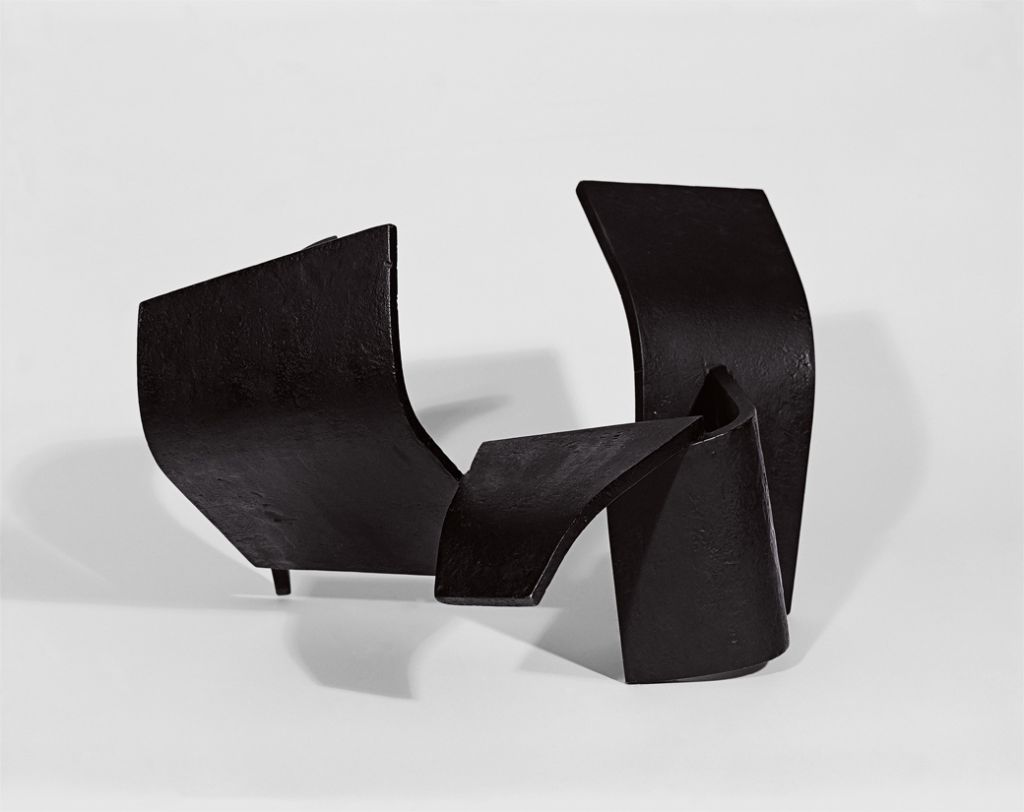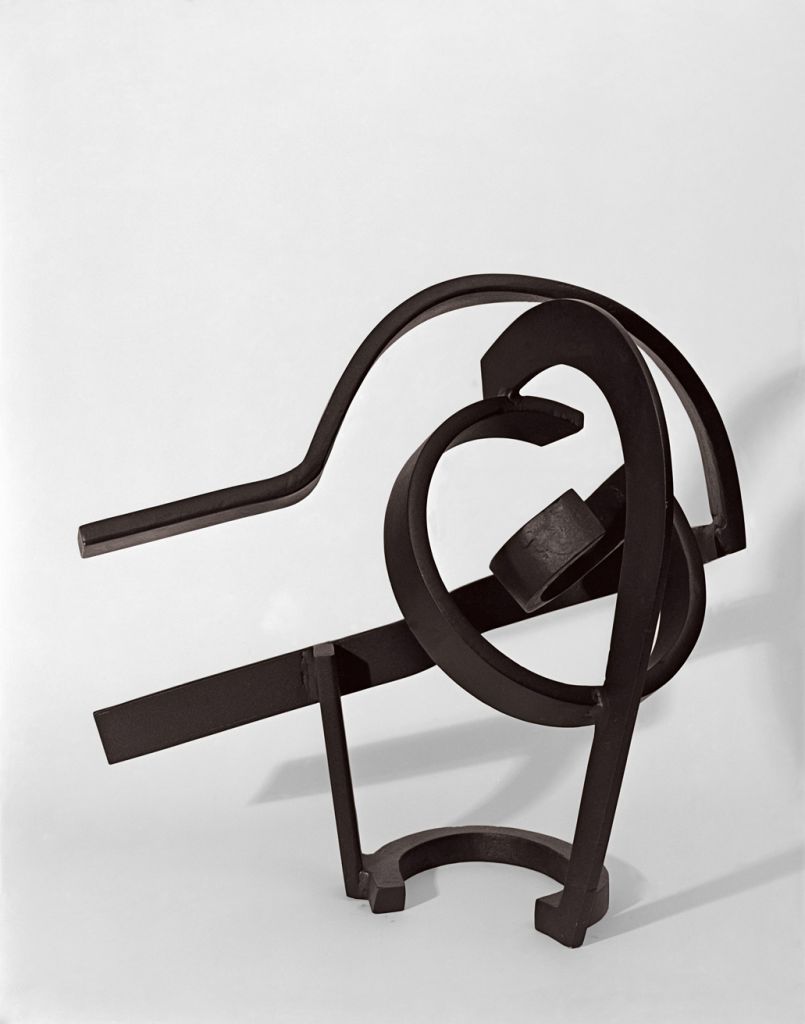Empty Box with Large Opening
1958Steel with copper plating46 x 45 x 39 cm
In 1959, after years of artistic activity, Jorge Oteiza concluded that he had taken his fine of experimentation as far as it would go and gave up sculpture to concentrate on cultural, political, and educational activism in the Basque country.
Back in the Basque country in 1947 from a long sojourn in South America, he assimilated the impact of Henry Moore's work before beginning to develop what he called his "Experimental Purpose." This work arose out of a series of conceptual considerations and from a particular way of working on sculpture-related issues: his notion that all artistic practice surges from a void that is nothing yet eventually reaches a Nothing that is Everything . So moments when expressive capacity and the amount of material increase, when the role of the spectator is purely receptive, will be followed by others in which the important thing is the fading out of expression, when the material is de-occupied and space takes on a predominant role, with the formerly passive spectator activated before the void of the sculpture.
These ideas of experimentation and spirituality, inspired by his reappraisal of works by masters such as Kandinsky, Mondrian, and Malevich, put into practice the process of emptying simple geometric forms such as the cylinder, the sphere, and the cube. He based this work on a range of attempts carried out on small models ordered in groups posing the same set of problems; these he referred to as "experimental families" or series.
Only the most representative or intense of these models were eventually transferred to the definitive material state, always on a modest scale. At around that time, as part of his Vacating of the Sphere series, he also produced Hillargia, 1957, Empty Construction with Five Curved Malevich Units (Construcción vacía con cinco unidades Malevich curvas), 1957, and Study for the Emptying of the Sphere (Ensayo de desocupación de la esfera), 1958. The first work makes good use of a study of motion from a structural viewpoint, while at the same time figuratively referring to the phases of the moon. The second is a close relation of one of Oteiza's essential works, Homage to Malevich (Homenaje a Malevich). In these works, owing to the combined use of welding techniques and forging, the sculpture seems to act as both spatial cause and effect: while space is defined in its concavities, by putting pressure on the forms space actually seems to be the ultimate cause of the concavities themselves. 1958's Study for the Emptying of the Sphere is clearly approaching the experimental conclusion of the series.
In 1958, Oteiza began working on his "conclusive works", which were highly geometric, matter-free spatial signs, later considered to be examples of proto-Minimalist sculptures. The sculptor interprets the void of which these works consist as a point of arrival and the sign that one process has concluded and another is beginning. Metaphysical Box by Conjunction of Two Trihedrons. Homage to Leonardo (Caja metafísica por conjunción de dos triedos. Homenaje a Leonardo), 1958, forms part the conclusive works created at the pinnacle of Jorge Oteiza's fruitful artistic career. These sculptures, the experimental nucleus of his work, are the most important and have had the greatest impact on the development of modern sculpture. Although Oteiza experimented with different types of geometric shapes, the cube provided the artist with the solution to his personal search as a sculptor: to define an empty space which could be filled with spiritual energy. This sculpture is an excellent example of the artist's metaphysical boxes. A dark and mysterious space is created in the interior, and when the boxes were placed on a stone or marble base the sensation the artist was after became even clearer: the feeling of a sacred space.
Empty Box with Large Opening (Caja vacía con gran apertura), also from 1958, belongs to the last great series known as Empty Boxes (Cajas Vacías), and represents a remarkably subtle box, where space and form flow much more than they do in other components of the same series.
Original title
Empty Box with Large Opening
Date
1958
Medium/Materials
Steel with copper plating
Dimensions
46 x 45 x 39 cm
Credit line
Guggenheim Bilbao Museoa






